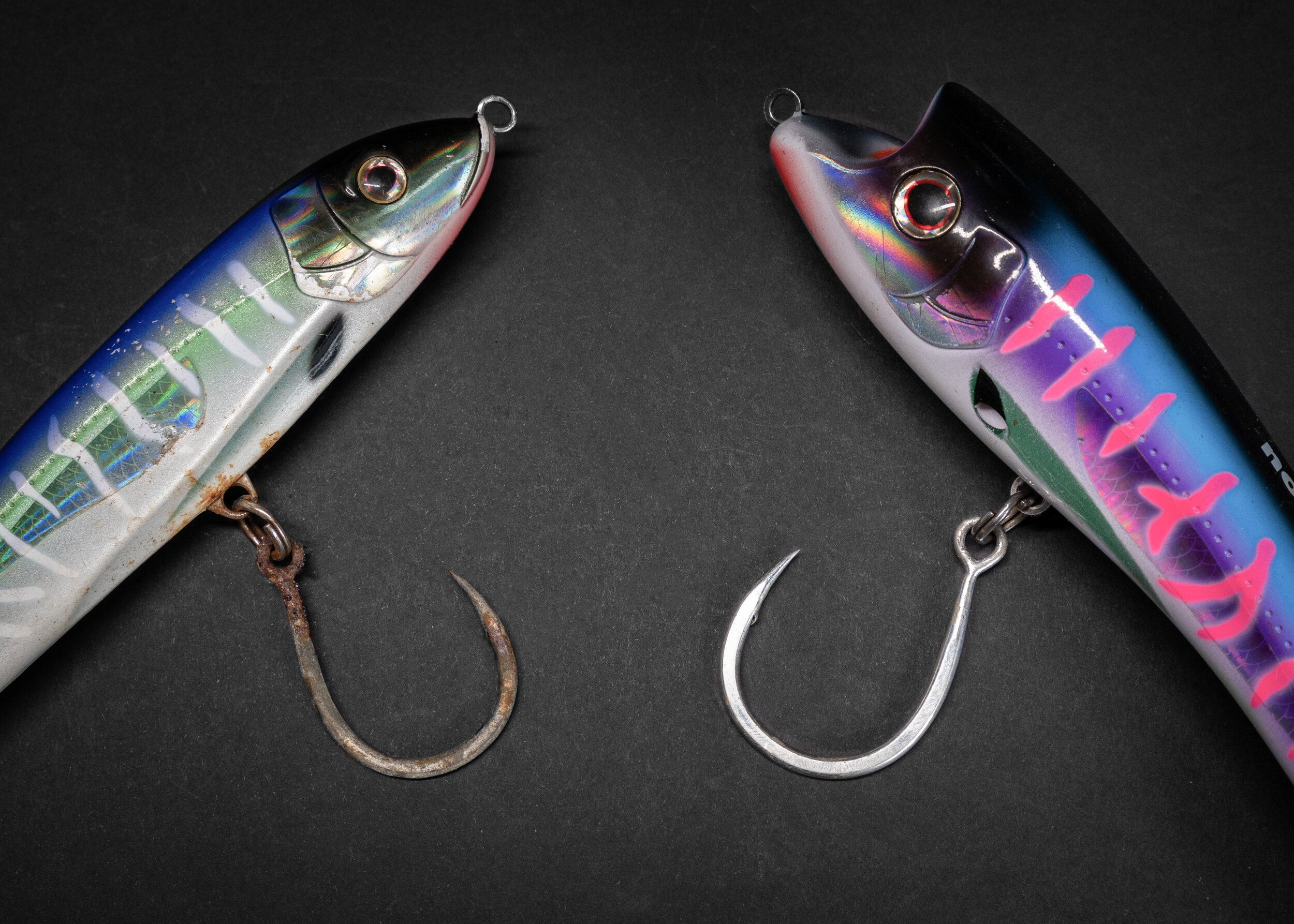One of these lures was put away wet, the other was put away dry after a fresh water rinse.
Let’s get straight into it.
Plastic stickbaits can provide a few solid benefits over wood-based lures. The main one being that because plastic lures are constructed using moulds, each lure will be formed the same as the next, this means we can effectively guarantee that each and every Nomad lure will be correctly tuned and swim as it should from the first cast. Another benefit is that they’re generally cheaper than handmade wooden alternatives, so losing them is less painful on the bank account.
But this also means that they don’t always receive the same care that an expensive wooden lure will receive.
There’s no reason that a plastic lure shouldn’t have the same lifespan as a more expensive wooden lure, provided that it is treated correctly.
We’ve got Nomad Design lures on the Nomad Sportfishing charter boat that have been hammered for years and still catch fish and swim the same as they did on day one.
We know Kiwi’s can be rough as guts on fishing gear, so here are a few quick pointers for those of you who want to get the most life out of your tackle.
The following applies to both wooden and plastic lures:
If you’re land-based, be careful not to bang the lure against rocks, and if you do, check for micro-cracks or damage before casting again. If you mainly fish from a boat, the same thing applies. A stick-bait slamming against the side of a boat will usually result in damage if it hits hard enough.
Once you’ve landed a fish, avoid using the lure as a handle when pulling in your catch. This can subject the lure to forces it was never intended to take and result in cracks or bending of wire.
When you’re swapping out lures, be sure to give it a quick rinse with a bit of freshwater before putting it back into the tackle bag. This will help preserve the hooks and metal components until you get back home. It’s pretty common to see a salt-covered lure get thrown into the gunnel for the rest of the day, which is more than enough time for corrosion to set in.
Once you’re home:
Rinse lures and hooks with fresh water. We just spread them out and hit them with the garden hose.
Let them dry completely and lightly coat the hooks, rings, and attachment points with a bit of CRC, INOX, or WD-40. There’s a heap of other products that also work, as long as it repels moisture, it will do the job.
Store in a dry place inside. Don’t just leave them in the gunnels of your boat! It also pays to keep your hooks away from other metals that can cause a reaction - eg stainless-steel hooks and aluminium boats, or tinned hooks in contact with lead sinkers.
You should be doing this with your rods and reels, so it pays to do your lures and tackle at the same time to keep them in top shape for longer.

